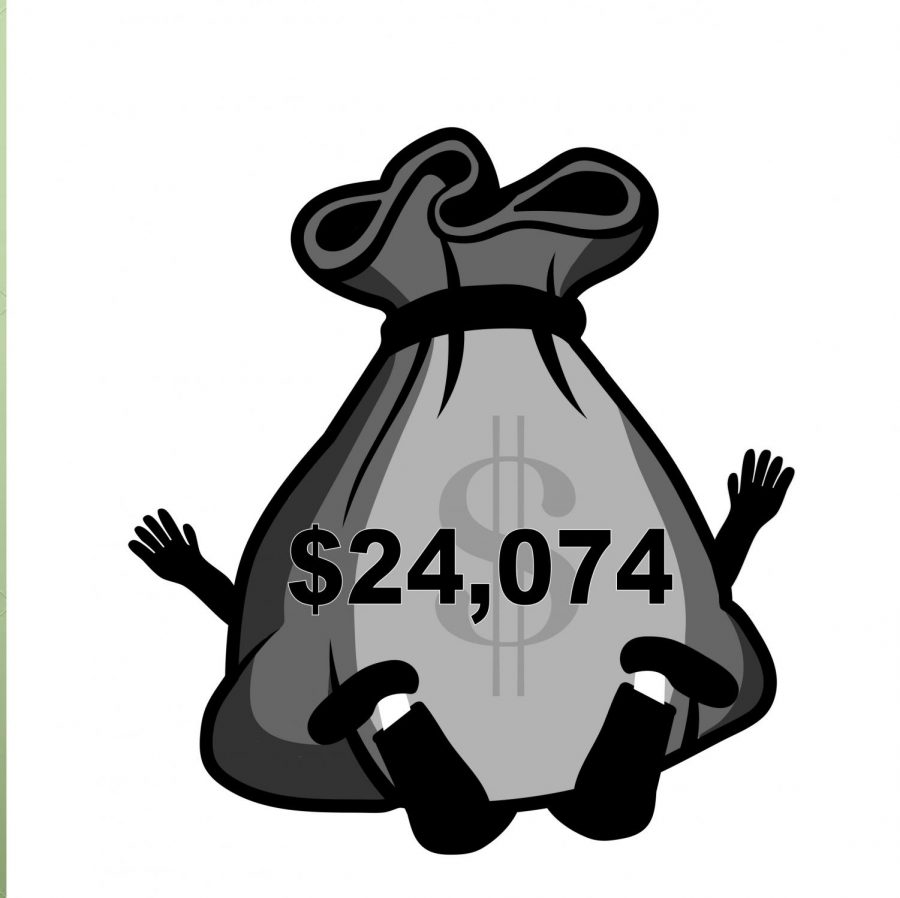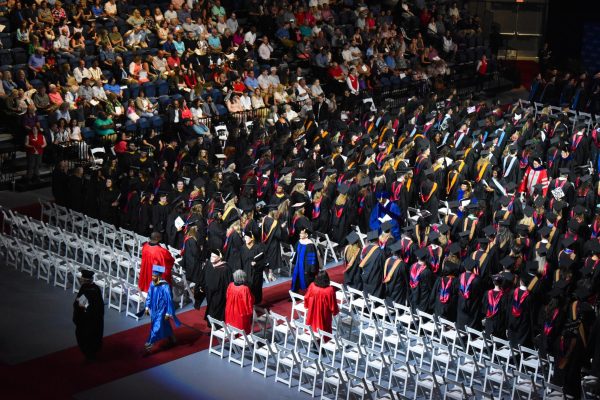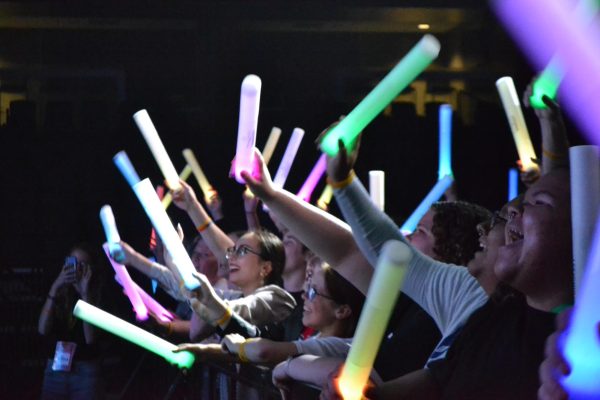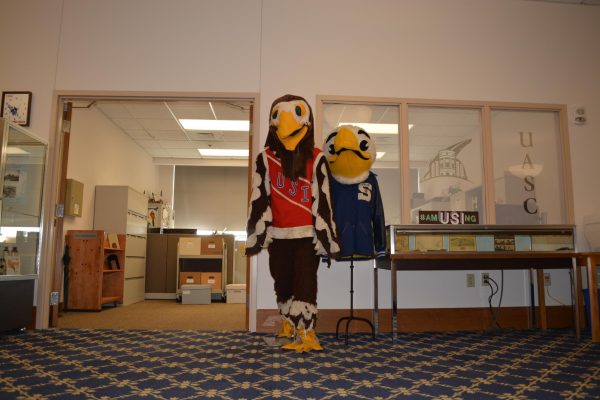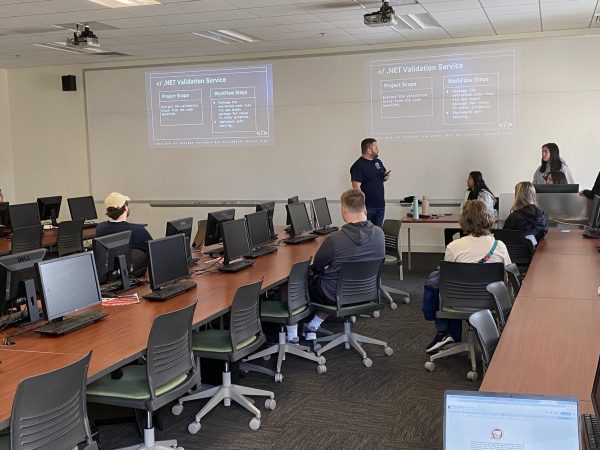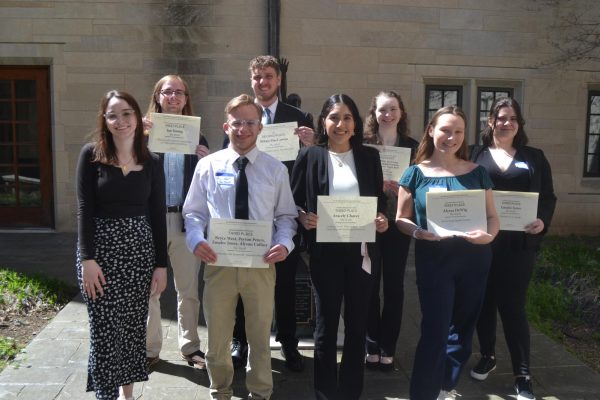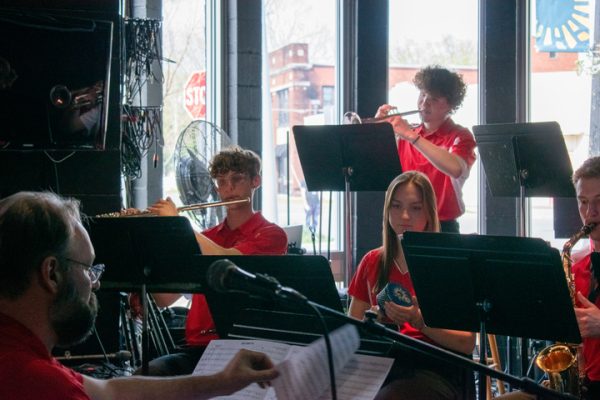USI student debt among lowest in the nation despite rising higher ed costs
Students are feeling the pressure as accumulating loans due to the cost of higher education sends them further and further into unaffordable debt.
Sophomore Business Management Alex Smith said he has accumulated around $30,000 in student loan debt since he enrolled at USI.
Smith decided to up his loans this year in order to pay less out of pocket, though he moved from the dorms to live in Eagle Village this year.
“I didn’t want to take out more loans but I kind of had to,” he said.
Smith, who is from Williamsport, Indiana, said he chose USI because it’s affordable and he liked the smaller size of the campus compared to other state universities.
“I’m still in a lot of debt but it takes some of the stress off,” Smith said of his decision to choose USI.
Third party financial firm LendEDU recently released their 4th annual Student Loan Debt report which breaks down student debt by school and by state.
Overall, USI ranks 168 out of 845 public and private colleges and universities across the country from lowest to highest. The average borrower from the USI 2018 graduating class incurred a student loan debt figure of $24,074.
While this number ranks in the top 250 schools with the lowest student debt per borrower, it is still higher than larger, public universities such as Northwestern University, University of Washington and University of Florida.
Per borrower student debt at USI is the 4th lowest in Indiana, behind schools such as Ball State University, Notre Dame University, Purdue University and the University of Evansville. USI ranks ahead of Indiana University regional campuses IU-Kokomo, IU-Southeast and IU-East.
Sixty-five percent of USI graduates in 2018 have some amount of student loan debt, which is 1.54% higher than in 2017.
Indiana places near the middle of the pack (number 26) when it comes to average student debt by state. Fifty-six percent of 2018 graduates statewide have some form of student loan debt.
These rising debt figures reflect a changing environment in higher education as the average cost of tuition has more than tripled in the past 20 years.
Tuition at USI has steadily increased over that time resulting in a 225% increase since 1997., when it was $2,456. Tuition for this academic year is $7,986.
Outstanding student debt across the nation sits at $1.52 trillion, becoming the second largest type of consumer debt behind only mortgage debt.
Student debt issues have raised questions across the country and has become a prominent point of discussion among Democrat Presidential candidates.
Smith originally planned on studying physical therapy at the University of Indianapolis but said it was too expensive.
Smith hopes to be a small business owner one day, but understands that it will take some time before he can fully pay off his student loan debt. He expects to double his debt by the time he graduates, leaving him at close to $60,000 to pay off.
“I’m going to have to be paying it off for a while and I feel like it will become a burden at times,” he said. “If I can successfully get into the field I want and everything plays out well then it’ll be worth it because I’ll be happy with what I’m doing.”
Smith said it is difficult for him to avoid going into massive debt because he comes from a low-income family.
“That’s really why we are in so much debt, because we have to keep taking out loans to cover everything,” he said. “We hardly get any help from FAFSA either.”
The increasing debt has made Smith question why it costs so much for secondary education.
“I know college isn’t for everyone but I don’t understand why it has to be that expensive,” he said. “If people come for one year and realize it’s not for them, they are still stuck with $15,000 in debt.”
Senior Special Education major Hayley Brantley said she is roughly $100,000 in debt. Brantley said she has to take out loans for housing, tuition, meal plans, phone bills and car payments every year resulting in about $20,000 in debt each academic year.
Brantley works full-time a Starbucks while also being a full-time student. She didn’t receive any financial aid or scholarships and had to take out private loans from four different banks.
She said people she knows have also been affected by the increasing costs to higher education. Brantley said her mom is still paying off her loans and her roommate even dropped out of school because she couldn’t afford it.
The average starting salary for a teacher, which Brantley hopes to become, in Indiana is $35,241. She said she expects to be paying off her loans for “the rest of my life.”
“I think I’m going to be one of those teachers who has another job, which is going to suck because teaching is a very demanding career anyway,” she said.
Brantley said the cost of tuition itself isn’t too bad but the addition of housing, food, fees and other payments.
“I think USI is affordable if you are a commuter student or if your parents are paying for you to go to school, but for a lot of people, that’s just not the case,” she said. “Adding the housing and meal plan costs really make it expensive.”

